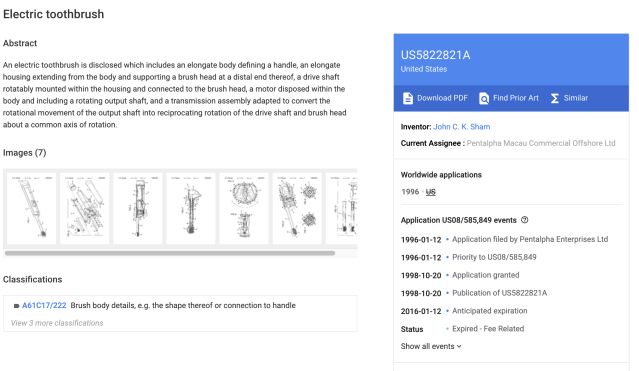Cross-Cultural Psychology
Documenting Cultural Lineages
A project to capture the evolution of human culture.
Updated April 9, 2024 Reviewed by Kaja Perina
Key points
- The Cultural Lineages project aims to show how each person’s actions contribute to human cultural evolution.
- It gives the 'cultural ancestors and 'cultural offspring' of a given innovation.
- It also gives the cognitive processes (e.g., concept combination, metaphor...) required for that innovation.
- The project is in its infancy; it is currently limited to technological innovation based on patent data.
My last blog, and the one before it, explored how leaving a legacy, whether it be a biological legacy—by having children—or a cultural legacy—through ideas and actions—may impact one’s sense of meaning in life. We saw that, although other species are occasionally creative, humans are unique in their capacity to cumulatively build on each other's ideas, adapting them to new situations and personal preferences. Thus, as do biological organisms, elements of culture evolve (Figure 1).

This blog builds on these previous blogs by outlining a project titled the Cultural Lineages project, the ultimate goal of which is to enable us to see precisely how each person’s actions and creative outputs, however humble or grand, fit into the grand scheme of human cultural evolution.
The Cultural Lineages project is a software program that documents cultural achievements, showing their ‘cultural ancestors’ (what inspired them, or what past achievements built upon) and their ‘cultural offspring’ (what subsequent achievements they inspired or provided key stepping stones for). It is a collaborative effort that builds on previous research by the principal investigators: myself (a cognitive psychologist at the University of British Columbia), Wlodek Zadrozny (a computer scientist at the University of North Carolina), and Kripa Rajshekhar (Founder and CEO of Metonymize: Third Wave AI), and it was the Undergraduate Research Award project of Aarohi Yadav.
The aim of the Cultural Lineages Project is to shed light on how cultural lineages evolve, and on the cognitive processes and technological precedents that give rise to successful innovation. More specifically, the goal of the project is to develop the first computer program that
(1) inputs data on human innovations (starting with patent data),
(2) deduces the psychological processes behind those innovations
(3) organizes the innovations into cultural lineages
(4) Finally, analyzes them to test hypotheses about how culture evolves.
Though our approach could readily be extended to any arena of human culture, at present, the Cultural Lineages project is limited to documenting technological evolution, using PatentsView and a large data set of American patents that our team has access to and experience with (Figure 2). Technological evolution in particular has had a profound impact on our species, with the oldest stone tools dating back millennia. We are analyzing patterns, and examining how theories and predictions about technological change and innovation are borne out in actual technological lineages, giving special attention to patents that inspire significant innovation in multiple fields or disciplines.

There have been previous attempts to organize elements of culture such as artifacts and natural languages into cultural lineages (e.g., Eerkens, Bettinger, & McElreath, 2005; Mace & Holden, 2005; O’Brien et al., 2001, 2002). These early attempts were a good start but they had serious shortcomings (summarized Gabora, 2006; Gabora, Leijnen, Veloz, & Lipo, 2011; Veloz, Temkin, & Gabora, 2012). They ignored the psychological processes responsible for cultural change, such as concept combination, analogy, and metaphor, and the 'catalyzing' effect of exposure to inspirational sources. In addition, they excluded the most novel and creative artifacts, claiming them to be ‘outliers’; however, it is exactly the ‘outliers’ that bring about cultural change!
In addition, they had limited scalability in terms of the size and complexity of the social network they could model. They were also unable to incorporate cultural discontinuities--wherein innovation in one domain (e.g., poetry) inspires innovation in another (e.g., music)--despite that such discontinuities permeate culture, and are responsible for the most groundbreaking innovations.
These problems stemmed from the fact that the analyses employed a Darwinian framework; i.e., they assume that culture evolves through a natural selection type process, that it has the same ‘deep (or algorithmic) structure’ as biological evolution. However, this is problematic, as explained in scholarly papers (Gabora, 2004, 2007, 2008, 2011, 2013, 2015; Gabora & Steel, 2021; Smith, Gabora, & Gardner-O’Kearny, 2018), and summarized in a previous Mindbloggling blog.
The Cultural Lineages project uses a specific tool from network science that was developed to model structures wherein, through interactions amongst the parts, a self-sustaining whole -- i.e., an autonomous agent -- emerges from the inside. This is very different from modeling intelligent behavior in response to external prompts, as in current large language models, such as ChatGPT (see this previous blog in Mindbloggling; for a more formal treatment, see Gabora & Bach, 2023).
The particular network we use is referred to as a Reflexively Autocatalytic Foodset-generated network, or ‘RAF’ for short. RAFs offer a new approach to modeling cognitive development and cultural evolution (Gabora, Beckage, & Steel, 2022; Gabora & Steel, 2017, 2020a,b, 2022; Ganesh & Gabora, 2022a). Not only do they have the capacity to scale up, but they readily incorporate the underlying psychology of how new ideas emerge through combinations of existing ones, how ideas get expressed as innovations in the external world, and how they 'catalyze' new innovations in the minds of others. The RAF framework also allows for analysis of complex networks and the incorporation of cultural discontinuities, in which an innovation in one field is inspired by an innovation in a different field (Ganesh & Gabora, 2022b).
We use artificial societies of interacting RAF networks to represent the minds of creators, and the exchange of ideas between them. This enables us to model not just how ideas take shape over time, the degree to which different ideas have different 'ancestries,' as well as the many ways in which different innovation ideas can be related to each other (such as by metaphor, by way of shared features at different levels of abstraction, or by tending to be found in similar settings, or through complementarity, such as mortar and pestle. It is by leveraging RAF theory that we achieve a more realistic representation of the interacting, idea-generating neural networks within a society of culture-evolving individuals (Figure 3).

Why does the Cultural Lineages project matter? The project is still in its infancy, but once it is complete, it will use crowdsourced data in a manner analogous to Wikipedia. By entering your own achievements, whether they be developing a new way of teaching something to children, inventing (or contributing to the invention of) a new technology, or helping someone else come up with something new), you’ll see how your efforts pave the way (often in unexpected ways) for other cultural developments. By entering the achievements of your friends, relatives, ancestors, and loved ones, you will preserve their contributions in this interwoven tapestry of human cultural achievement.
The project is a crucial step toward (1) documenting human civilization in a way that shows how humans and their innovations are intertwined, and (2) better understanding the factors driving successful innovation. It can be used for innovation trend mining, technology gap analysis, and prediction (e.g., what technology supercluster might be just over the horizon), and potentially opening up spaces for new innovation. It could shed light on why some innovations are ground-breaking, or inspire trajectories of other innovations, potentially in new fields. It will enable us to assess the number, kind, and order of ‘thought steps’ that separate a given innovation from its predecessors, potentially providing an objective means of allotting credit where credit is due that could revolutionize how creators are compensated for their work.
I began by saying that the ultimate goal of this project is to enable us to see precisely how each person’s contributions to human culture fit into the grand scheme of human cultural evolution. This ultimate goal is still a ways from being realized, as the project is still in its infancy. However, I hope that this blog has given you an idea of how it’s being carried out, why it matters, and the exciting prospect it offers of charting human cultural history.
References
Eerkens, J. W., Bettinger, R. L., & McElreath, R. (2005). Cultural transmission, phylogenetics, and the archaeological record. In Lipo, C. P, O’Brien, M. J., Collard, M., & Shennan, S. (Eds.) Mapping Our Ancestors: Phylogenetic Approaches in Anthropology and Prehistory. New York: Aldine de Gruyter.
Forster, P. & Toth, A. (2003). Toward a phylogenetic chronology of ancient Gaulish, Celtic, and IndoEuropean. Proceedings of the National Academy of Sciences USA 100(15), 9079–9084.
Gabora, L. (2004). Ideas are not replicators but minds are. Biology & Philosophy, 19(1), 127-143.
Gabora, L. (2006). The fate of evolutionary archaeology: Survival or extinction? World Archaeology, 38(4), 690-696.
Gabora, L. (2007). Epigenetic and cultural evolution are non-Darwinian. Commentary on E. Jablonka & M. Lamb, ‘Evolution in Four Dimensions’. Behavioral and Brain Sciences, 30(4), p. 371.
Gabora, L. (2008). The cultural evolution of socially situated cognition. Cognitive Systems Research, 9(1-2), 104-113.
Gabora, L. (2011a). Five clarifications about cultural evolution. Journal of Cognition and Culture, 11, 61-83.
Gabora, L. (2011b). How a Generation Was Misled About Natural Selection. Psychology Today: Mindbloggling. https://www.psychologytoday.com/ca/blog/mindbloggling/201105/how-generation-was-misled-about-natural-selection
Gabora, L. (2013). An evolutionary framework for culture: Selectionism versus communal exchange. Physics of Life Reviews, 10(2), 117-145.
Gabora, L. (2015). A communal exchange-based framework for cultural evolution. In R. Dale, C. Jennings, P. Maglio, T. Matlock, D. Noelle, A. Warlaumont & J. Yashimi (Eds.), Proceedings of the 37th Annual Meeting of the Cognitive Science Society (pp. 2835-2836). Austin TX: Cognitive Science Society.
Gabora, L. (2018). The creative process of cultural evolution. In A. Leung (Ed.) Handbook of Culture and creativity: Basic processes and applied innovations (pp. 33-60). New York: Oxford University Press.
Gabora, L. & Bach, J. (2023). A path to generative artificial selves. In Proceedings of the 22nd Portuguese Conference on Artificial Intelligence.
Gabora, L., Beckage, N., & Steel, M. (2022). An autocatalytic network model of conceptual change. Topics in Cognitive Science, 14(1), 163-188.
Gabora, L., Leijnen, S., Veloz, T., & Lipo, C. (2011). A non-phylogenetic conceptual network architecture for organizing classes of material artifacts into cultural lineages. In L. Carlson, C. Hőlscher & T. F. Shipley (Eds.), Proceedings of the 33rd Annual Meeting of the Cognitive Science Society (pp. 2923-2928). Austin TX: Cognitive Science Society.
Gabora, L. & Steel, M. (2020a). Modeling a cognitive transition at the origin of cultural evolution using autocatalytic networks. Cognitive Science, 44(9), e12878. [http://arxiv.org/abs/2007.06442]
Gabora, L. & Steel, M. (2020b). A model of the transition to behavioral and cognitive modernity using reflexively autocatalytic networks. Journal of the Royal Society Interface, 17, 20200545.
Gabora, L. & Steel, M. (2021). An evolutionary process without variation and selection. Journal of the Royal Society Interface, 18(180), 20210334.
Gabora, L. & Steel, M. (2022). From uncertainty to insight: An autocatalytic framework. In: Beghetto, R. & Jaeger, G., Eds. Uncertainty: A Catalyst for Creativity, Learning and Development (pp. 125-158). Berlin: Springer.
Ganesh, K. & Gabora, L. (2022a). A dynamic autocatalytic network model of therapeutic change. Entropy, 24(4), 547.
Ganesh, K. & Gabora, L. (2022b). Modeling discontinuous cultural evolution: The impact of cross-domain transfer. Frontiers in Psychology - Theoretical and Philosophical Psychology, 13, 786072.
O’Brien, M. J., Darwent, J., & Lyman, R. L. (2001). Cladistics is useful for reconstructing archaeological phylogenies: Paleoindian points from the Southeastern United States. Journal of Archaeological Science 28, 1115-1136.
O’Brien, M. J., Lyman, R. L., Saab, Y., Saab, E., Darwent, J., & Glover, D. S. (2002). Two issues in archaeological phylogenetics: Taxon construction and outgroup selection. Journal of Theoretical Biology 215, 133–150.
Mace, C. J., & Holden, R. (2005). A phylogenetic approach to cultural evolution. TRENDS in Ecology and Evolution, 20(3), 116–121.
Smith, C., Gabora, L., & Gardner-O’Kearny, W. (2018). The extended evolutionary synthesis facilitates evolutionary models of culture change. Cliodynamics: The Journal of Quantitative History and Cultural Evolution, 9(2), 84-107.
Veloz, T., Temkin, I., & Gabora, L. (2012). A conceptual network-based approach to inferring the cultural evolutionary history of the Baltic psaltery. In N. Miyake, D. Peebles & R. P. Cooper (Eds.) Proceedings of the 34th Annual Meeting of the Cognitive Science Society (pp. 2487-2492). Austin TX: Cognitive Science Society.




